Picture this: you’re on your way to the shelter to pick up a new dog. You’ve done all the prep that we covered in part 1, and are confident that you’re ready for your new family member.
As you arrive at the shelter and sit in a waiting room, you may realize that you still feel underprepared. You may be wondering:
- Are you ready for the car ride home?
- What should you expect for the first night?
- How do you set your new best buddy up for success once you cross the threshold?
The first 24 hours of your relationship with your pet are hard and pretty overwhelming. You’ve got to balance excitement, anticipation, and stress. You want everything to be perfect, but it’s important to understand that there will be an adjustment period.
You’re only human and are bound to make some missteps, but with this guide, we’ll help you cover all your bases to ensure you and your pooch put your best foot (and paw) forward for your new life together.
Let’s go over how to set your dog up for a lifetime of success by doing the first 24 hours right.
Your First 24 Hours a With New Dog Guide
We’re going to get pretty granular here, but keep in mind that this piece serves as a guideline – your experience may vary.
Dogs that are in foster-based rescues or were only in the shelter for a day or two will have an easier time re-adjusting to a home life than dogs that were in the shelter for weeks, come from hoarding situations, or are puppy mill survivors.
Throughout this guide, try your best to join me in your new dog’s head. You may already adore your new four-legged pal, but your new pooch doesn’t really know you yet. She doesn’t know you’re keeping her forever – you’re just another stranger.
She’s probably had a lot of change in her life lately, and she’ll be stressed. That stress may show as lethargy, fear, or over-excitement.
Brush up on your dog calming signals and remember to take it slow – the first night is at huge risk to trigger stack your dog in a bad way.
Trigger stacking is when a lot of minor stressors cause a dog to cross that red line treshold, and become fearful or aggressive (shout out to Woof Like to Meet. for inspiring our own trigger stacking diagram).
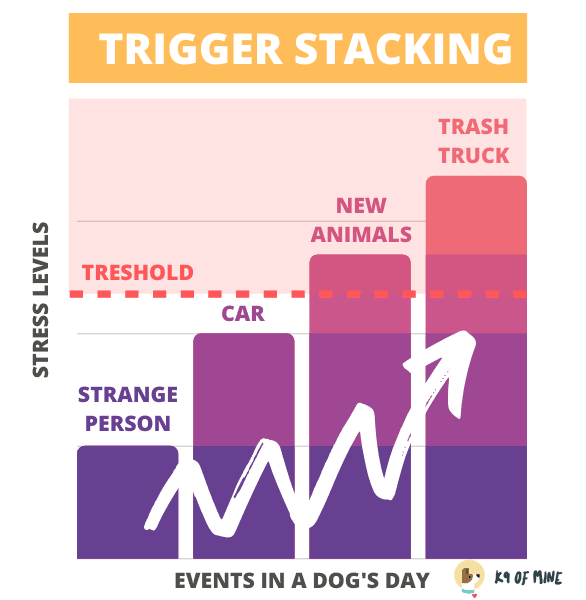
The Very Beginnings: What to Do Before Heading Home
You’ve picked out your new pal (whether found through a dog adoption website like Petfinder, a reputable breeder, or at a local animal shelter) and today is the big day – time to go home!
Part 1: Meeting the Whole Family (Including the Furry Members)
Be sure to bring your whole family to meet your new dog.
If you came by alone, most shelters will hold the dog for you while you go collect the family members. Even if the dog is going to be “your” dog, it’s always a good idea to ensure that the dog and your whole family have good chemistry.
Even more importantly, bring your other dog(s) with you. Introduce your dogs on leash in an open, outdoor area. This can help reduce the stress for your first dog, as he’ll already be familiar with your new dog before they enter “his” home.
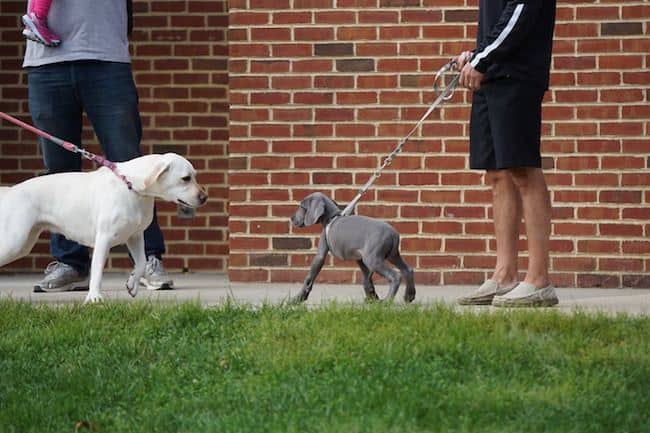
How to Introduce Your New Dog to Your Existing Dog
Ideally, this will proceed in several steps:
- Step 1: Get two handlers. Each person will have one dog on leash.
- Step 2: Walk the two dogs parallel to each other with some stationary obstacles between them. I love walking the dogs on opposite sides of a row of parked cars. The visual breaks will help reduce the tension for the dogs.
- Step 3: Let one dog follow the other dog into a fenced play yard area. Be sure that there are no toys or treats on the ground that could cause a fight!
- Step 4: Circle the dogs around each other, trying to keep their leashes loose.
- Step 5: With loose leashes, let the dogs meet. The handlers might need to circle in order to reduce tension on the leashes as the dogs sniff rears.
- Step 6: If all is going well, drop both of the leashes on the count of 3 and let the dogs do their thing.
If there is any sign of tension (a stiff dog with a high tail, a growl, or a snap), call the dogs apart and try again in a few minutes. Keep the dogs moving to reduce tension.
Be sure to have an air horn or hose handy in case things go really wrong – this is the safest way to break up a dog fight!
Part 2: Start Dispensing Treats ASAP
Once your new dog has met your family and the resident dog, you are ready to fill out paperwork.
Take some treats with you or ask the adoption counselor for some – be sure to start giving your new dog lots of treats right away.
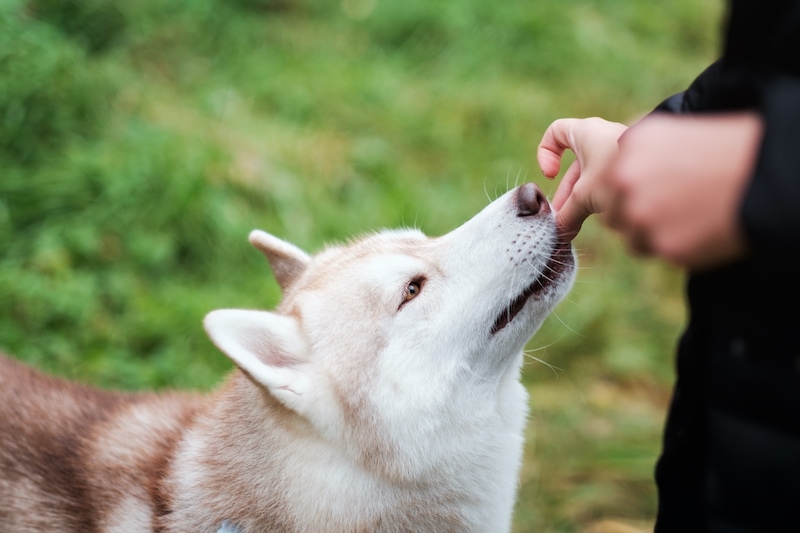
Do this even if you want your dog to lose some pounds in the long run – it’s worth it to start out on the right paw.
This generous treat-dispensing behavior helps solidify your relationship right away. Remember, this isn’t bribery – it’s just showing your dog how incredibly cool and awesome you are!
Your new dog doesn’t know you, and giving her treats is a way of showing her that you’re a great person to be around, as food seems to magically come out of you!
Part 3: Play 20 Questions (If You Haven’t Already)
If you haven’t already met the dog (ideally you will have already met a few times), this is a good time to ask a lot of questions about your new pooch.
Remember that the shelter might not know much about this dog’s history, but it’s still good to ask.
To recap from our post on what to do before bringing a shelter dog home, some good questions include:
- Has any medical work been done on the dog? Ask for a copy of the medical and vaccine records.
- Has the dog shown any concerning behaviors from its history or while under the care of the rescue?
- Does this dog have a history with kids? If the dog has no known history with kids but you have kids or are planning on starting a family, I’d pass on that dog for your child’s safety.
- How is she with other dogs? What age and sex dogs has she met and done well with? Have there been any issues with other dogs while at the shelter? What about when she’s on leash with other dogs?
- Has she ever met a cat?
- How does she do with people of different ages, genders, sizes, or shapes?
- Has she ever escaped from the shelter or the home? If so, under what circumstances?
- Was she destructive in her last home? If so, under what circumstances?
- Where was this dog kept? Where was she from? This is very important. Knowing that your dog was rescued from a puppy mill or hoarding situation will help adjust your expectations as far as training and socialization. Again, some rescues or shelters might not know – my own border collie was left in an overnight kennel at the shelter with very little information. He’s turned out as good as they get!
- Has she ever barked, growled, snapped, lunged, bitten, or bared teeth at another dog or human? Under what circumstances?
A dog with a “bite record” doesn’t need to be passed over if he’s otherwise lovely.
It’s important to gather as much info as possible on the circumstances of the incident. A dog that bit and broke skin when she missed the tug toy, or bit when she was in severe pain, is very different from a dog that lunged and bit a stranger in the middle of a walk.
Once you’re satisfied with your dog’s history, it’s time to head out.
Many big shelters have a store, so you can pick up any last-minute things like enzymatic pet cleaner, a leash, or a bed before you head home. Once you’ve paid for everything, it’s time for the car ride!
Heading Home & Initial Welcome
Part 4: The Car Ride Home
For the first 24 hours with your new dog, reducing stress and avoiding triggers will be the name of the game.
That said, there are certain stressful situations that can’t be avoided. Your initial car ride home is one of them.
Some shelter dogs have never been in a car except for the day they were brought to the shelter, so they might not be thrilled to try it again.
Your new dog might jump right into the car, totally ready to go. That’s what Barley did when I brought him home. Other dogs will stop dead, thrash on leash, or lie down when encountering the car.
We had three dogs escape from the shelter last month alone as their owners tried to get them into the car!
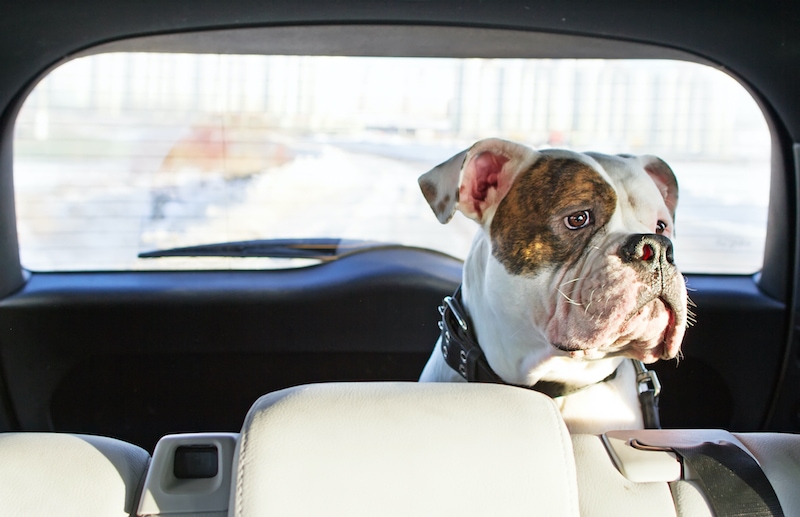
Use a combination of treats and gentle leash pressure to coax your dog into the car. Be careful to keep an eye on your dog’s body language before you pick them up or push them into the car – if they are scared enough, they might bite. Ideally, use a crate or carrier designed for car travel.
Remember, it’s always a good idea to test out a new product on a small patch of skin, as some dogs may be allergic to certain ingredients!
Once in the car, continue to give your dog a lot of treats like they’re raining from the sky! If your dog is really scared enough, they might not eat – don’t worry, it’s fairly common. Just keep offering them – she might start to eat eventually.
The number one rule for the car ride home is to go straight home.
Many new owners are tempted by PetCo, PetSmart, or the local natural pet food store. Don’t succumb! We are trying to reduce stress and triggers.
Even if your dog looks fine, remember that she’s probably still stressed. You can go to PetCo next week — it will still be there. If you still need supplies, ask a friend or family member to watch the dog or run errands for you.
The only place your dog should be on d-day is at the shelter/breeder or at home.
At the shelter, we get countless calls from new adopters who want to know why their dog growled or hid at PetSmart. They insist the dog was fine and having fun while picking out a new toy, and then “snapped.” This is the definition of trigger stacking.
If you’ve ever tried to go grocery shopping at the end of a day where you were late for work and got yelled at by your boss, you know how even mundane routine processes can become overwhelming. Don’t put your dog into that kind of situation!
Besides, your dog might have kennel cough or not be done with her vaccines, in which case it’s not physically safe to be taking her out and about! It’s best for everyone if you take Fifi straight home.
Part 5: The First Few Hours at Home
You’ve made it home, hurrah! It’s been an ordeal, so you collapse on the couch and pull out your phone to post some photos of Fifi in the shelter, in the car, or on your lap.
Immediately, you’re getting texts from friends who want to come meet her! How should you referee the first few hours? It’s all so exciting.
No Guests Allowed!
I know I’m starting to sound really lame here, but please don’t bring over guests during your dog’s first few days home. Your dog has already had a huge day!
These first days should be used to help your pooch bond to you – this will make future introductions easier as she has you to lean on for emotional support. Your friends will have to make do with the photos and videos on Facebook, Snapchat, and Instagram!
Activities & Giving Your Pooch The Grand Tour
The first few hours of your dog’s arrival should focus on relaxing.
Introduce her to the rest of the house and her sleeping area. Take her to the back yard on leash, or go for quiet, easy walks around the block. You can introduce her to some games like fetch or tug as well.
Look Out For Stress and Calming Signals
Keep an eye out for calming signals like panting, whale eye, sweaty paws, lip licking, and excessively licking your hand.

If you see these, take a step back and consider if there’s anything that your dog could be interpreting as scary or stressful.
If a certain object is causing anxiety, try to remove it or associate if with something awesome. For example, Barley was initially very stressed by my boyfriend’s speakers. I started giving him a treat every time he looked at the speakers. He quickly learned that the speakers are pretty great!
Introduce Fun Crate Games
If you plan on using a dog crate for your new pooch, start working on some crate games right away. You want to be sure that your dog is familiar and comfortable with the crate before she spends the night sleeping there!
This is a great way to feed your pupper her dinner – she’ll earn it by playing the crate games, and eating out of your hand is a great way to build trust and a bond.
Pro Tip: It’s not for everyone, but I personally don’t ever feed my dogs out of food bowls. Barley only ever eats out of his Kong Wobber or my hand as we do training! Hand feeding can be a great way to build a bond with your new pooch.
Prep Some Kongs & Puzzle Toys For Your Pup
If you haven’t already, stuff some Kongs with wet dog food, peanut butter, or cream cheese and freeze them (or see our collection of Kong meal recipes here).
I use them in the crate, while I’m working if Barley is being annoying, or whenever I leave the house. Licking is soothing for dogs, so Kongs are a great stepping stone to calming your dog, especially during those first few days.
Some products like Rescue Remedy in your dog’s water is another food-based way to reduce stress for your new dog!
Expect Some Accidents – They’re Normal
Your dog might have been potty trained a year ago, a month ago, or just yesterday. Regardless, a new environment is bound to result in some housebreaking setbacks.
According to his previous owner, Barley was potty trained and only spent 18 hours in the shelter. He still had two accidents in the house his first night!
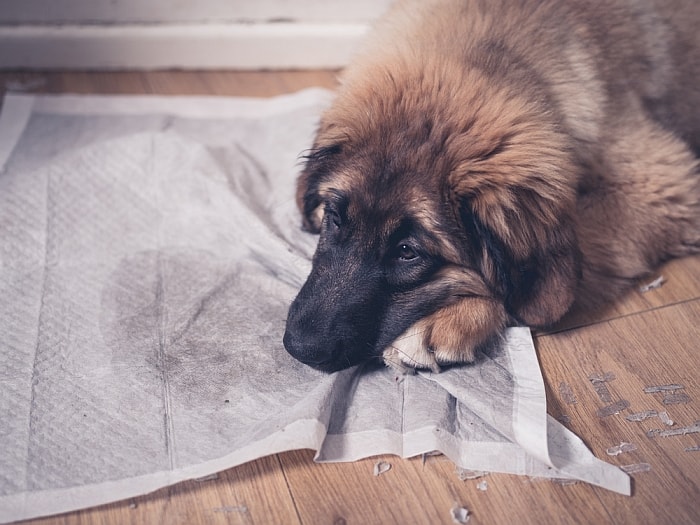
Many dogs will need potty practice as they get acquainted to their new home. Some dogs have never been potty trained, and others have been in the shelter for so long that they’ve lost the habit! Many shelters simply can’t get their dogs out of the kennel often enough to accommodate potty schedules for dogs.
Take your new dog outside on leash (even if you have a yard) every hour or two at first – even more often if your new fur buddy is a puppy. Then reward her lavishly for pottying outside!
When you’re indoors, keep an eye out for circling, sniffing, or other common pre-potty behaviors. Take your dog out if you see those.
Depending on your dog’s background, you may have to make some concessions. Some dogs might refuse to pee on leash if they’ve never been strapped to a leash before. For these dogs, consider setting up an x-pen or a small enclosed space in your yard where they can safely relieve themselves comfortably while you work on desensitizing the dog to wearing a leash.
I don’t recommend letting your pooch have full run of the house unsupervised for the first week or so. Make sure she’s trustworthy as far as potty and chewing goes before you take that leap of faith!
Remember (And Stay True To) Your Rules
At your family meeting before adopting, what did you decide as far as expectations for your dog? If she’s going to sleep in the crate long-term, then it’s best to start with the crate on night one (no exceptions)!
If she’s not allowed to be on the couch long-term, don’t let her on the couch on night one. These rules might be hard to enforce during the first days and weeks of your pup’s arrival, but keeping your pup’s expectations consistent will make her life easier in the long run!
Getting Settled & Beginning Routines
Part 6: The First (And Longest) Night
You’ve taken your new fur baby out for her last potty break and are ready to turn in. The first night can be hard for you and her both.
She’s starting to get settled in, but is likely still stressed and scared.
Take your pup to her new sleeping space, which should be set up with a Kong, your old sweatshirt, and a bed for her.
If she’s not in a crate, I’d recommend putting up some dog gates to keep her in the general sleeping area. If she’s sleeping in your bed, just close your bedroom door.
Crying: It’s Gonna Happen
Expect a lot of crying from your new pup on night one. She might cry in the crate for hours or have accidents in the middle of the night, or even both. This will try your patience and might have you wondering if you’ve just made a huge mistake.
Barley cried so much that Andrew and I both used earplugs. We didn’t just go get him and let him out because that teaches him that crying is how he gets out of the crate.
We toughed it out, and it totally sucked.
The next night, though, he cried for two minutes. The third night, he went right to bed. It was worth it!
If you let your dog cry for three hours and finally cave, you’ll regret it in the long run! You just taught your dog that she has to cry for three hours, and then she’ll get to run free. Not a good lesson for your dog to learn – trust me, you’ll end up paying the price!
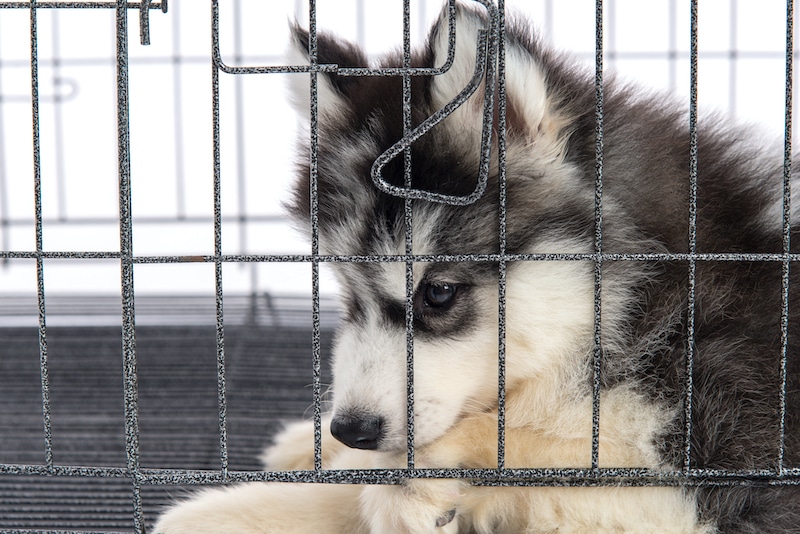
This may sound callous, but if you’ve done your crate training right your dog will settle down eventually.
You can try to move the crate into the bedroom – that helped Barley a lot. If you don’t think you can handle a crying dog for several hours on night one, then maybe your dog shouldn’t be crated overnight. But trust me – after the horrific temper tantrum of night one, Barley now runs right into his crate with a wagging tail. He knows the crate means treats!
Plan on Plenty of Late Night Potty Breaks
If your dog is under a year old, plan on doing a late-night potty run or two. Try to just set an alarm and take your pup out – don’t wait for her to cry to wake you.
Puppies can hold their potty for their months of age in hours. In other words, a four month old puppy should be able to hold their potty for about four hours. Set your alarms accordingly.
Make Those Potty Breaks Mind-Numbingly Boring
Make your potty breaks extremely boring.
Take your dog out on leash and go outside, and stand still. If your dog doesn’t go within a few minutes, take her back in and give her a cookie in the crate. If she does go, quietly praise her and give her a treat.
Don’t turn the late-night potty breaks into late-night parties with tons of treats, praise, or play. If you make it too fun, she’ll associate the late night trips with play instead of potty! Soon you’ll be running canine raves at 2am, and I doubt you want that.
Part 7: The First Full Day Together
Ideally, you will have brought your dog home on a Friday or Saturday so that you won’t have work on your first day of having her. That’s not always the case, though.
Regardless, start the day by waking up early to take your new pooch outside. Play a game and do some crate games or other training to feed her breakfast.
If she doesn’t want to do training in exchange for kibble, then put her kibble into a dog puzzle toy. That’s fine! Some dogs don’t think kibble is worth working very hard for.
Just like your first few hours together, your first full day together should be quiet. Aim to replicate your long-term routine in a watered-down way.
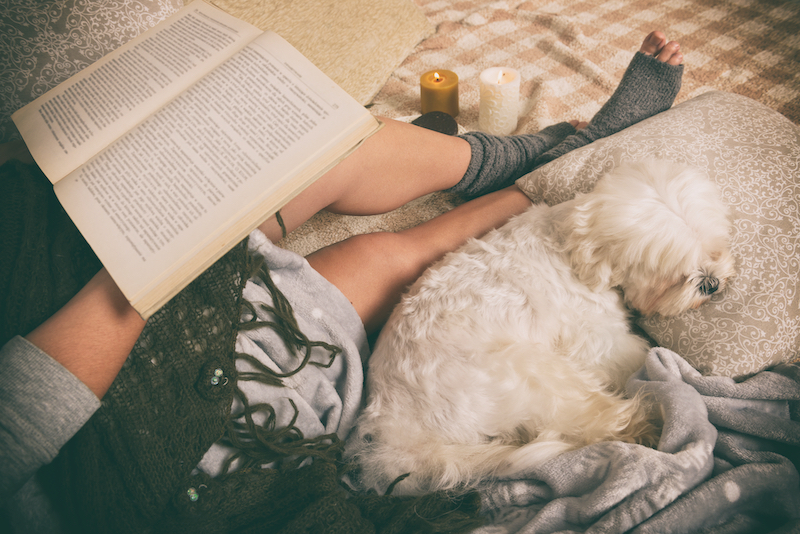
If eventually you want to leave your dog loose in the house during your 8 hour work day, today you might baby gate her into the kitchen. That way she’s loose, but is in a safely puppy-proofed space.
If you’re a weekend warrior, take your pup out on a quiet walk. Don’t head out to hike the mountains or the brewery just yet! Mimic your normal routine without stressing her out too much. This will look different for every dog and every family.
Some dogs will have a harder time adjusting to your home. These dogs might just hide under your bed or run hyperactive laps around the house.
Try to use treats and training to encourage better behavior, but don’t punish or force your dog to stop using her coping mechanisms!
Common First-Day Issues
Your first 24 hours likely won’t be all sunshine and roses. My boyfriend and I seriously questioned our own judgement every time we brought home a foster, and I’ve heard some true horror stories of the first 24 hours from clients at the shelter I work for.
Here are the five most common ones to look out for, in no particular order:
- Barking. Your dog might bark at you, might bark at cars, might bark at nothing at all. Just be patient and try to redirect your dog to something more appropriate to do, like playing a game or chewing a chew toy. You’re not rewarding her for barking – you’re showing her something better to do instead! Barking in the crate is a particularly common problem on day one.
- Excessive Fear. Some shelter dogs come from a pretty rough background. Be patient with them. They might hide, whine, try to escape, pee out of fear, or avoid being touched. Be gentle and consider calling a positive-reinforcement based trainer to help work through your dog’s fear issues.
- Chewing. Dogs chew. They topple trash cans and try to eat the carpet. Just like with barking, try to redirect your dog to doing something better. Spray bitter apple or something else that tastes bad (hair spray or vinegar works) onto the tempting item you want them to leave alone. If your dog’s a super tough chewer, opt for an indestructible dog chew toy to occupy them!
- Accidents. We’ve already covered accidents a bit, but let’s say it again. Expect a few. The best thing to do is supervise and confine your dog. Using indoor dog gates or x-pens will make it harder for Fifi to sneak off and potty behind the sofa. You may even resort to just tieing her leash to your belt! Take her out every few hours. Take her out if she’s sniffing and circling, after she plays, after she eats, and after she drinks. Give her some treats and reward her bathroom break with a game or a walk. Don’t end your walk with potty – this teaches her that the fun ends when she pees!
- Aggression. Many dogs that show aggression are coming from a place of fear. They might feel cornered. You might have unwittingly ignored their other warning signs. If your new dog shows any signs of aggression towards you or your family, take some steps back. Try to deescalate the situation and call a trainer when you feel ready, if you’re willing to work through that aggression.
If the aggression is a deal-breaker, that’s ok. You need to do what’s best for you and your family. Call the rescue and ask them what your options are.
Again, remember not to judge too quickly. Try to identify what caused the aggression and think through whether or not the dog gave you fair warnings.
If a dog growls when someone tries to pull her out from under the bed (where she feels safe), that’s different from a dog that bit their owner when they tried to put the leash on her.
If you find yourself facing one or all of these frustrating behaviors, it’s ok to be frustrated.
Victoria Stillwell, dog training extraordinaire, has a great post on her blog called “14 Things to Do Instead of Being Frustrated with Your Dog.” It’s so good that I printed it out to hang on my fridge. We all get frustrated, and dogs can be major pains at times. We still love them, and it’s important to make sure we deal with our frustration without harming our relationship with our dog.
Ready for more? Continue on to part 3 of our dog adoption series, where we’ll discuss your first week with your new pooch and how to set up a successful, life-long companionship!
How did your new dog adjust to the first night at home? Did you try any tips or tricks that seemed to work wonders? Let’s hear it!
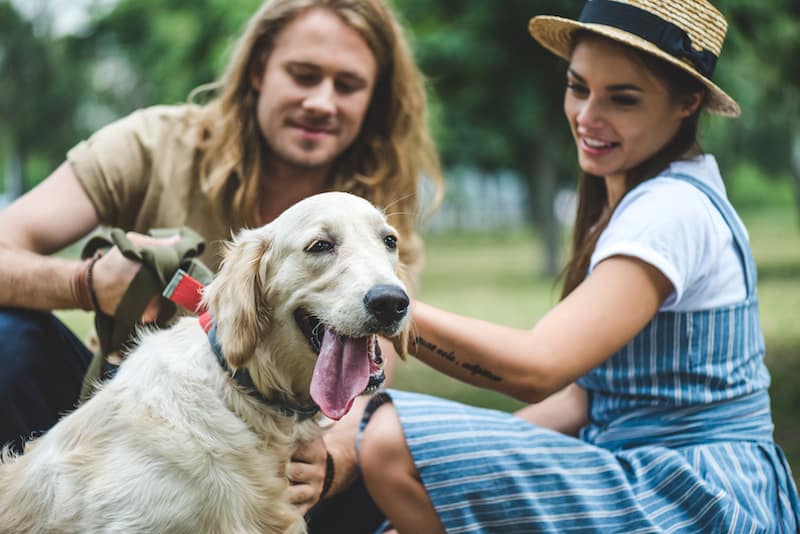



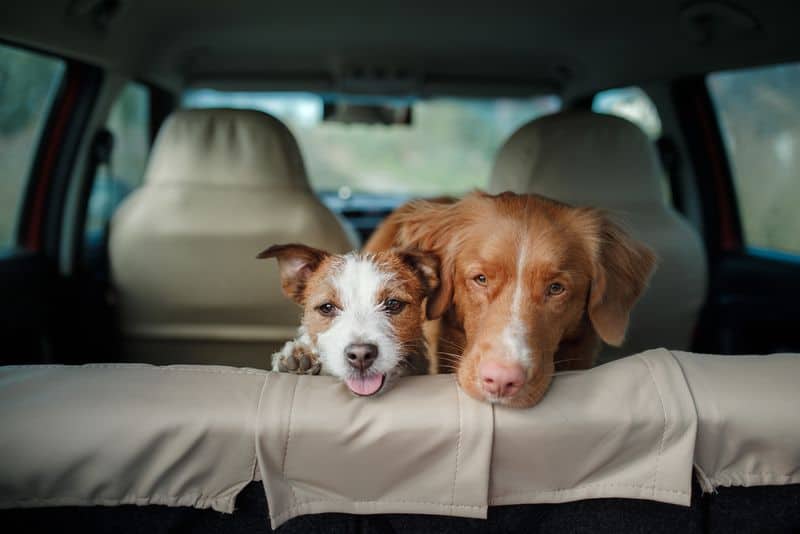
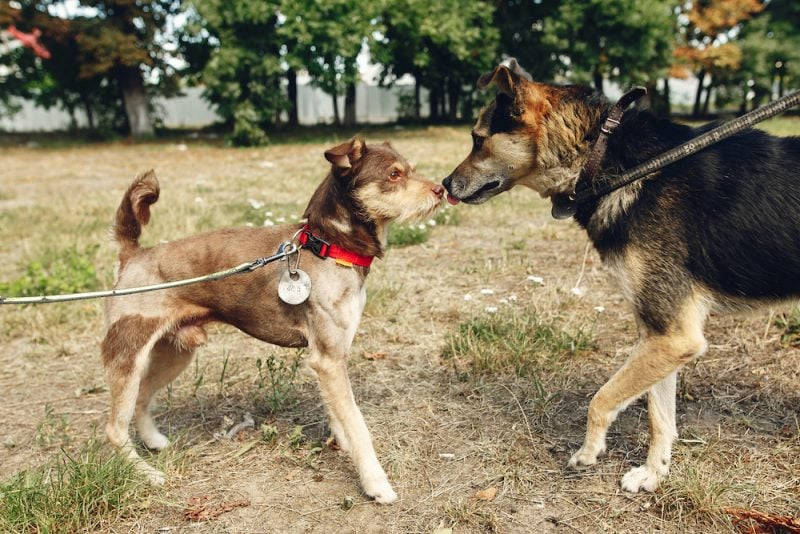
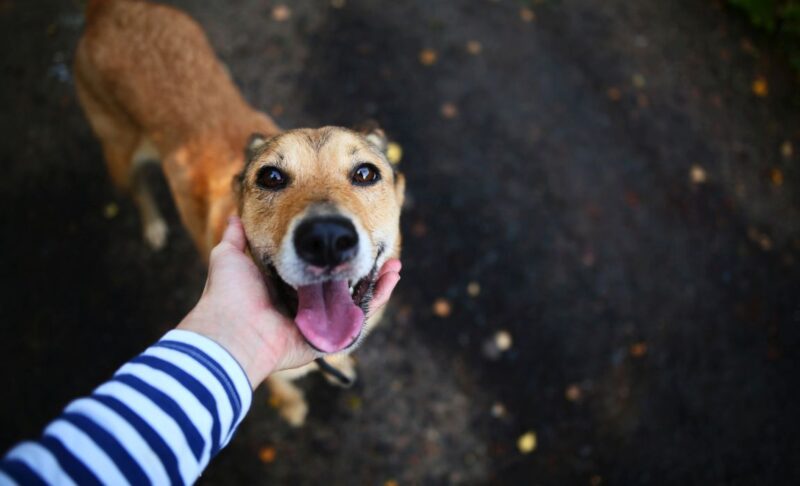

Leave a Comment